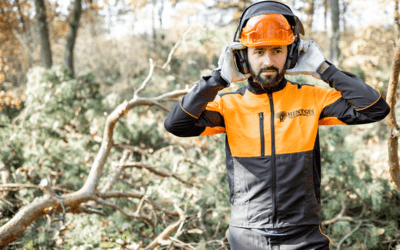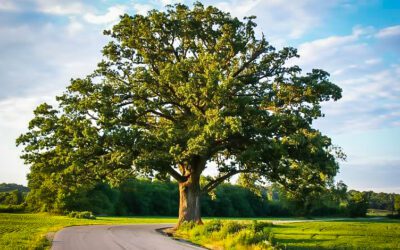As the frost thaws and plants and trees begin to awaken from their long, winter slumber, prepare the trees on your property so they can have a healthy growing season.
Remove the debris
The easiest first step is to thoroughly clean your yard of any residual debris that persisted through the fall and winter.
- Rake up any old leaves and small sticks.
- Round up any branches that may have succumbed to the harsh temperatures and conditions of winter.
- If you have decorated your trees for the holiday season, be sure to remove the decorations. When lights or garlands are wrapped around the limbs or trunks of your trees, it can restrain and distort their growth.
- If you have put up any protective coverings, remove them and store them away for next fall.
Once you have successfully cleared all of the debris, pull any weeds or seedlings that have begun growing around the base of your trees. Removing these helps to ensure that your trees aren’t fighting with other plants for vital nutrients.
Inspect for damage
After the area around your trees has been thoroughly cleaned, it is a good idea to inspect them for any kind of damage, be it from harsh weather, pests, or disease. If damage is suspected, consider having the tree evaluated by a professional arborist.
Refresh the mulch
Refresh the mulch at the base of your trees. Starting with fresh mulch in early spring will provide the most benefits to your trees and the soil around them. When mulching, make sure that each trunk has a layer that is three to four inches deep all the way around the circumference. Fresh mulch will help your trees retain water, keep weeds at bay, and reduces the risk of injury from lawn equipment.
Keep them hydrated
As temperatures rise, it is vital that your trees do not dry out. Watering thoroughly throughout the growing season helps them remain healthy, growing, and in some cases, producing fruit. The process of watering your trees varies depending on the age of the tree. Small, young trees need to be watered close to the trunk. Larger trees need to have a much bigger area surrounding the trunk to be well-saturated. As trees age and mature, the root system grows. Keeping a large area well-hydrated will keep your trees healthy and protected from disease. When irrigating a large tree, consider the size of the root system. Water slowly to the “dripline” of the tree and often enough to moisten the soil to a depth of 8-10 inches.
Prune to perfection
Spring is a fantastic time to prune your trees. During this time of year, there are fewer leaves to contend with, which makes it much easier to assess areas that need pruning. There are also fewer pests, bugs, and lower risk for disease. When pruning, cut back any branches that are rubbing together, remove any dead or diseased branches, and any new shoots from limbs that were previously removed. While pruning small, young trees is a fairly simple task, it is a good idea to consult a professional about pruning your large, established trees. Pruning large trees is dangerous and should be left to professionals.
Provide fertilization
Proper fertilization will set your trees on the right path for a healthy spring and summer. First, test your soil for any deficiencies. There are several ways to have the soil around your trees analyzed for composition and to verify it has the right nutrient balance. A kit for taking soil samples can be purchased from a home improvement store. The samples can be sent to the University of Missouri for analysis. If you prefer, a professional can be hired to take samples and send them for analysis. Much like feeding a person, feeding trees must be done correctly. Knowing the nutrient profile of the soil will ensure the proper kind and quantity of nutrients is added. Trees that are nutrient deficient often grow slowly, have discolored leaves, and begin to drop leaves before autumn.
Proper care and maintenance is the best way to ensure your trees remain happy and healthy for generations to come. Now is a great time to reach out to the professionals at Hentges Tree Service for a complete evaluation of the trees on your property.
DO YOU NEED HELP?
We’re here to serve you and we provide free estimates.



